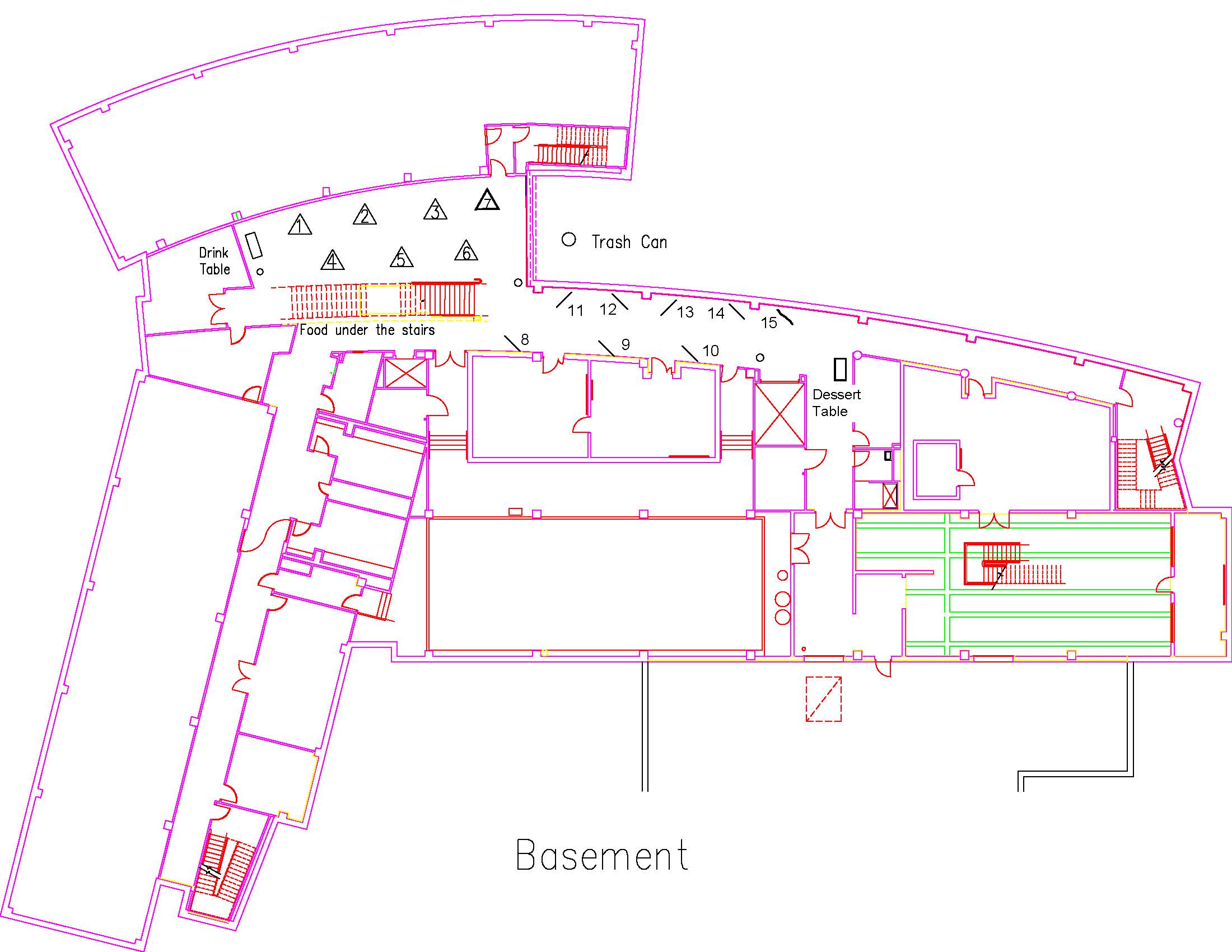PSYC2019SULLIVAN34412 PSYC
Polarization of Moral Judgements
Type: Undergraduate
Author(s):
Sarah Sullivan
Psychology
Timothy Barth
Psychology
Kaleigh Decker
Psychology
KatieScarlett Ennis
Psychology
Charles Lord
Psychology
Vishal Thakkar
Psychology
Advisor(s):
Timothy Barth
Psychology
Location: Session: 2; 3rd Floor; Table Number: 3

View PresentationAttitude Representation Theory (Lord & Lepper, 1999) asserts that individuals evaluate attitudes based on a subset of associations. As this subset of associations varies, attitudes can vary as well. Previous research demonstrated that people can mistake self-generated information for provided information, through source monitoring errors (Johnson, Hashtroudi, & Lindsay, 1993), after extrapolating beyond the information given (Lu, 2015). We sought to apply ART and cognitive tasks (e.g., extrapolation, embellishment, and validity) by having participants judge the actions of fictitious groups. Although these groups are fictitious, they allude to current political viewpoints. We tested the effects of extrapolation (thinking about additional attributes of a target group; Experiment 1), embellishment (convincing a friend not to join the target group; Experiment 2), and biased assimilation (testing truth and validity of sources; Experiment 3) on polarization of moral judgments. Compared to a control group, embellishment polarized negative attitudes toward the group. The current set of studies could shed some insight about how people view issues, self-radicalize judgments, and understand thoughts of lone-wolf terrorists.
PSYC2019SWENSSON26152 PSYC
Evaluation of Equivalence-Based Instruction to Teach Children Elements of Music
Type: Undergraduate
Author(s):
Remington Swensson
Psychology
Reagan Cox
Psychology
Camille Roberts
Psychology
Juliana Sequeira Cesar de Oliveira
Psychology
Advisor(s):
Anna Petursdottir
Psychology
Location: Session: 1; 1st Floor; Table Number: 6

View PresentationThere are many benefits for children to receive music education. Research shows that note reading and music playing skills are positively correlated with cognitive development, motor proficiency, and self-esteem (Bilhartz, Bruhn, & Olson, 1999; Costa-Giomi, 2004; Schellenberg, 2004). The purpose of this study was to evaluate the use of equivalence-based instruction (EBI) to teach elements of music to children who have no music background in the age range of 4-7 years. The children first learned to relate the name of a note (e.g. “quarter”, “half”) to the length of the note as well as a picture of the note. They were also taught to name the lengths and names of sequences of notes (e.g. “quarter, quarter, half”). In the second part of this study, the children learned letter names of notes (e.g., “A”), keyboard placement, and what finger (e.g. thumb) goes with each letter name and piano key. Finally, we tested for emergent relations from part one and part two. Date collection in progress, but we predict to see emergence of relations between what was taught in part one and what was taught in part two. For example, when told “play this sequence on A,” participants will be able to use the correct finger on the correct piano key to play the notes in the sequence at the correct lengths.
PSYC2019WADE38311 PSYC
Role of the rodent amygdala circuitry in surprising nonreward
Type: Undergraduate
Author(s):
Zach Wade
Psychology
Shannon Conrad
Psychology
Sara Guarino
Psychology
Quynh Nguyen
Psychology
Mauricio Papini
Psychology
Advisor(s):
Mauricio Papini
Psychology
Location: Session: 1; 2nd Floor; Table Number: 5

View PresentationSince the 1920s, it has been recognized that nonhuman animals are capable of forming expectations about rewards and exhibit emotional responses when those expectations are violated—when obtained rewards have lower value than expected rewards. Our lab utilizes a rodent model for coping with unexpected reward loss with a specific interest in furthering our understanding of the underlying neural correlates. Frustration effects in rats are commonly and reliably produced using the consummatory successive negative contrast (cSNC) procedure, where rats are given access to a highly preferred 32% sucrose solution followed by an unexpected downshifted to 4% sucrose. Such surprising nonreward leads to a suppression of behavior compared to a control group that always received the less-preferred, 4% sucrose solution. Studies involving neurological manipulation indicate that permanent lesion or reversible deactivation of the central amygdala (CeA) and the basolateral amygdala (BLA) eliminate the cSNC effect. While these studies are important for identifying key structures, they provide little information about the underlying circuitry. The present research examined the role of the neural pathway between the BLA and CeA in the cSNC task using a chemogenetic approach known as Designer Receptor Exclusively Activated by Designer Drugs (DREADDs). Inhibitory DREADDs are intracranially infused into the key structures and later activated by intraperitoneal injections of clozapine N-oxide (CNO). Both groups of rats received unilateral inactivation of the BLA and CeA. The experimental (contralateral) group has one functioning area in each hemisphere, a procedure that disrupts communication between the two areas. The control (ipsilateral) group has one hemisphere disrupted while the other is left intact. Preliminary results indicate a disconnecting the BLA-CeA pathway reduces the cSNC effect in contralateral rats compared to ipsilateral rats. The BLA-CeA pathway is necessary to respond to surprising nonreward. These results add to the hypothesized model of circuity underlying unexpected reward loss in mammals. Because the amygdala circuitry is highly conserved across species, these results inform us about the neural circuitry engaged by similar instances of frustrative nonreward in the human brain.
PSYC2019WHITE49325 PSYC
The Role of Quest Religiosity in Medical Decision Making
Type: Undergraduate
Author(s):
Grace White
Psychology
Caroline Angell
Psychology
Advisor(s):
Cathy Cox
Psychology
Location: Session: 1; Basement; Table Number: 8

View PresentationAccording to Terror Management Theory, religious people are motivated to cling to their religious beliefs when reminded of their death. Quest motivated religious people, however, value doubt in their beliefs and are uncertain about the validity of their religion. The purpose of the present work was to examine medical decision making among individuals who actively question their religious beliefs when death concerns are salient. Specifically, we found that individuals who are quest motivated reject traditional faith healing in favor of more scientific medical practices. These effects were exacerbated by death awareness. These findings support previous research suggesting that quest individuals are motivated to embrace their religious doubts in when faced with existential concerns.
BIOL2018CALLAGHAN48892 BIOL
Identifying Cellular Proteins that Interact with Hepatitis C Virus Protein NS3/4A
Type: Undergraduate
Author(s):
Kaitlyn Callaghan
Biology
Advisor(s):
Giridhar Akkaraju
Biology
View PresentationHepatitis C Virus is estimated to infect 3% of the world’s population and is transmitted by contaminated blood. HCV can be asymptomatic or lead to cirrhosis of the liver, liver cancer or hepatocellular carcinoma. Understanding the virus life cycle and the viral proteins generated by HCV will help generate new mechanisms of inhibition of the virus. HCV produces 10 viral proteins when it infects hepatocytes that increase the reproduction ability of the virus. The anti-viral response of the body uses transcription factors such as ATF-2, NFKB, and IRF-3 that translocated into the nucleus and bind to the interferon gene that produces interferon to alert the body of a viral infection. HCV viral protein NS3/4A acts as protease to cleave the polycistronic strand of viral proteins made by HCV and is known to inhibit IRF-3 movement into the nucleus to inhibit the production of interferon. HCV viral protein NS5A is known to inhibit the movement of transcription factor NFKB into the nucleus, thus inhibiting the anti-viral response. We are interested to see if NS3/4A inhibits the anti-viral response by blocking the movement of both transcription factors IRF-3 and NFKB into the nucleus.